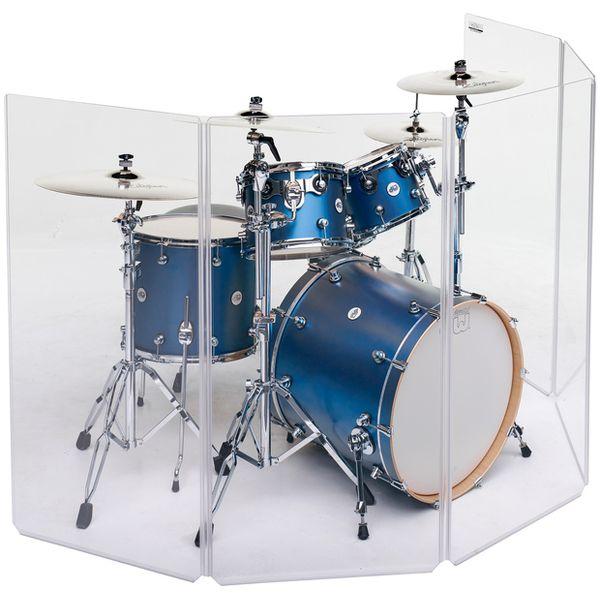Notifications

7 minutes, 11 seconds
-15 Views 0 Comments 0 Likes 0 Reviews

Drum volume is one of the most common challenges for church sound teams and musicians alike. A great drum mix brings energy to worship, but without control, things can get out of hand fast. Cymbals can cut through vocals, toms can rumble the room, and the overall mix suffers. That’s where a drum shield comes into play.
Whether you're a seasoned church tech or a new volunteer figuring things out, understanding curved drum shield can make your life a whole lot easier. Let’s break down what you need to know—no fluff, just the essentials.
A drum shield (also called a drum screen) is a set of clear acrylic panels placed around the drum kit to reduce sound bleed. It's not about silencing the drums—it's about managing the volume and keeping things controlled for the sound tech and the congregation.
Most importantly, a drum shield helps isolate the drums from other stage microphones, especially vocal mics. This gives the audio engineer more control and reduces the risk of feedback or a muddy mix.
In church environments, especially those with smaller rooms or hard surfaces, this can make a massive difference.
You’ve probably seen different setups—some churches use just front panels, while others build full enclosures with a roof and acoustic treatment.
If you're browsing online and see a drum enclosure for sale, it’s usually meant for settings where full isolation is needed—think smaller sanctuaries, live streams, or more sensitive audio setups.
Not all drum shields are created equal. If you’re hunting for a drum shield for sale, here are a few things to keep in mind:
If you're looking for long-term use and minimal maintenance, invest in a high-quality shield. You don’t want to replace cheap panels every year.
Adding a drum enclosure for sale to your cart is only part of the equation. If you’re going for full isolation, you’ll need some internal acoustic treatment too.
Bare acrylic reflects sound, so untreated enclosures can actually make things worse inside the shield. Foam panels, blankets, or sound baffles inside the enclosure help absorb excess reflections and keep the drum sound natural.
This is especially important if your drummer uses in-ear monitors. A well-treated enclosure makes it easier to hear clearly and stay on beat.
Once your seamless curved drum shield is set up, mic placement becomes even more important. Since sound is now partially contained, your mics need to be carefully positioned to capture what matters.
Keep cymbal mics high enough to avoid harsh crashes and point your snare and tom mics directly at the source. Kick mics should be isolated as much as possible to prevent resonance from bouncing around the enclosure.
Good mic technique plus a solid shield equals a tighter, more focused drum mix every time.
If you’re on the tech team and trying to get a drum shield for sale approved, focus on these key points:
You might even invite leadership to hear the difference in person during rehearsal. Once they hear the improved sound, most are quick to give the green light.
A drum shield isn’t just a block of plastic—it’s a vital tool for churches looking to balance live energy with clear, controlled sound. Whether you're exploring a basic setup or investing in a full drum enclosure for sale, getting the right gear can completely transform your audio experience.
You don’t have to fight with volume every Sunday. With the right setup, your drums will sound full and powerful—without overwhelming the rest of the mix. That’s a win for your team, your musicians, and your congregation.

